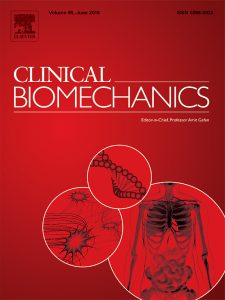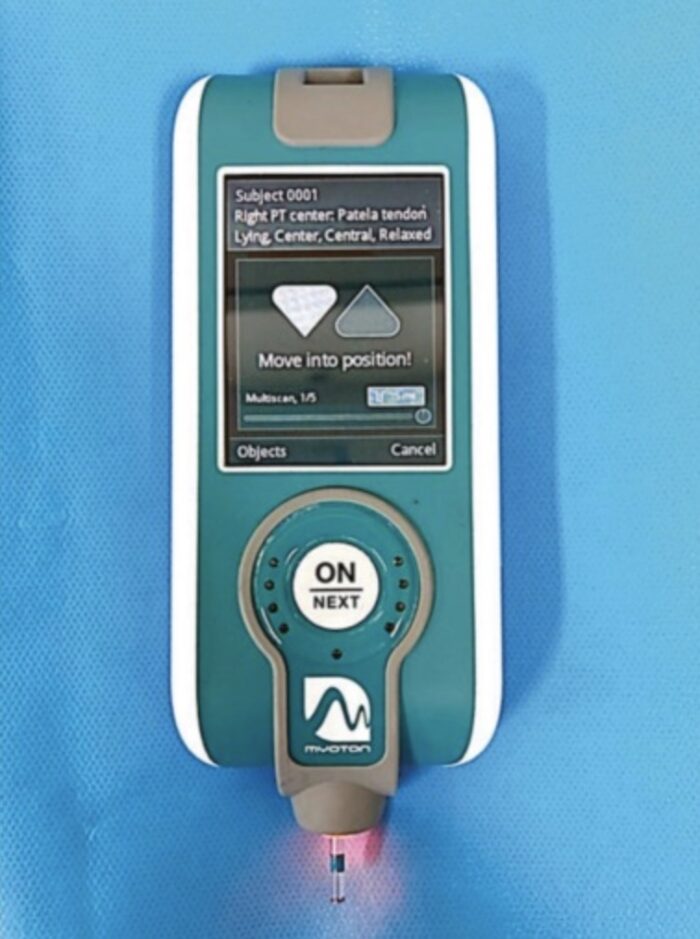Publications

Changes in patellar tendon stiffness and mechanical strength test using collagenase injection: Verification ex vivo experiment using porcine model
Authors: Wataru Kurashina 1, 2, Tsuneari Takahashi 2, Hideyuki Sasanuma 2, Katsushi Takeshita 2
Affiliations:
- Rehabilitation Center, Tochigi Medical Center Shimotsuga, 420-1 Kawatsure, Ohira, Tochigi 329-4498, Japan
- Department of Orthopaedics, Jichi Medical University, 3311-1 Yakushiji, Shimotsuke, Tochigi 329-0498, Japan
Journal: Clinical Biomechanics - August 2025, Volume 128, Article no. 106632 (DOI: 10.1016/j.clinbiomech.2025.106632)
-
Field & Applications:
- Medical
- Sport
- Animal studies
- Treatment evaluation
- Orthopedics
- Injury prevention
- Musculoskeletal disorder
- Reliability
- Validity
- Myoton PRO is a handheld tool that can be used to evaluate PT stiffness in both research and clinical settings.
Background: Patellar tendinopathy is accompanied by chronic pain that can cause athletes to abandon their careers. Although effective treatment methods are essential, research on patellar tendinopathy treatment is insufficient. We aimed to investigate changes in the stiffness and mechanical strength of porcine patellar tendons (PT) that were artificially altered by a collagenase injection. We hypothesized that collagenase injection would lead to reflecting tendinopathy-like degeneration.
Methods: Twenty-seven porcine PTs were used. To mimic tendinopathy-induced changes in the mechanical properties of tendons, PTs were injected with collagenase via collagen digestion using a chemical solution. The PTs were sequentially assigned to two groups: a phosphate-buffered saline control group (n = 13) and a collagenase group (n = 14) as an experimental group. Each injection was administered into the central PT. After incubation at 37 °C for 7 h, PT stiffness measurements were performed using a handheld device, and mechanical strength testing was performed. The failure modes and structural properties (upper yield load, maximum load, linear stiffness, elongation at failure, and length change) were determined.
Findings: PT stiffness was higher in the experimental group than the control group (880.5 ± 95 vs. 735.4 ± 110 N/m; P = 0.008). Significant differences in failure modes were observed between the two groups. Half of the experimental group were torn at the mid-substance of the PT, whereas most of the control group were not (P = 0.033). The structural properties were not significantly different between the two groups (P > 0.05).
Interpretation: Collagenase injection changes the stiffness and fragility of porcine PT.

Figure 1. Photograph of a Myoton PRO device.

Figure 2. Biomechanical evaluation of the patella-patellar tendon-tibia composite specimens. The specimen was mounted on a tensile tester with a set of specially designed grips. Biomechanical testing was performed by applying a tensile load to the patellar tendon parallel to its long axis.
Keywords: patellar tendon, tendinopathy, porcine model, stiffness, biomechanical study
In this ex vivo study, collagenase injections were used to alter the stiffness and fragility of the PT in porcine model. This verified that it is possible to create a porcine tendon degeneration model using collagenase injections and suggested that this model may serve as a reproducible ex vivo platform for evaluating localized biomechanical changes associated with tendon degeneration, thereby informing the design of future in vivo therapeutic studies.


